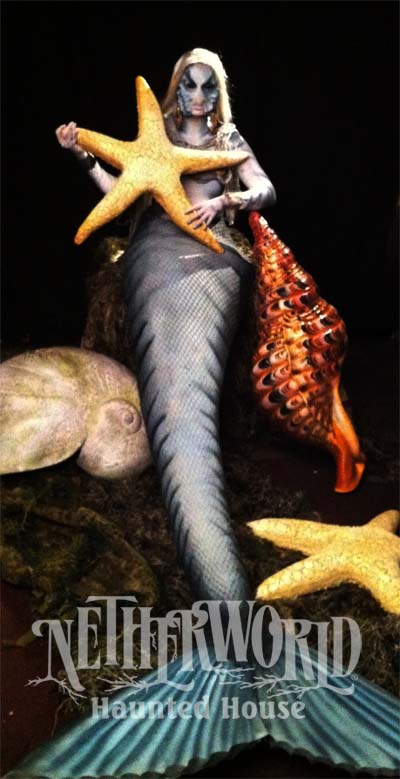The goddess Atargatis had fallen in love with a mortal and killed him unintentionally. As a penance, she jumped into a lake to take the form of a fish, but the waters would not conceal her unsurpassed beauty. She then took on the form of a human above the waist and a fish below. Thus, in 1000BC, the legend of the mermaid was born.
It is said that Alexander the Great’s sister became a mermaid after her death. Thessalonike lived in the Aegean Sea, inquiring of passing sailors if Alexander lived. Should they answer positively she would calm the waters and offer safe passage. Should she be displeased with the answer, however, she would become enraged and produce a violent storm to destroy the sailors along with their ship.
Mermaids fill the lore of many different cultures, typically demonstrating the same characteristics: beautiful human head, arms and torso with a large fish tale, with enchanted voices that could lull the listener into a trance. Some are said to smell of happiness, while some shed tears of pearl, and others still have the power to heal human ills. And although most accounts consider mermaids to be harmless or helpful to humans, there are some legends which tell of a more malicious side of these sirens of the sea.
Certain myths say that these exotic creatures use their magical song to lure sailors to their doom, or carry drowning men to the bottom of the sea to die, often crushing them with their tails. British folklore says that the mermaid is unlucky, predicting and provoking danger. It is also believed by some that the mermaid casts a lovely image above water, but once beneath the surface is revealed to be a hideous monster bent on destroying men.
Despite countless reported sightings of mermaids all over the world, conclusive proof of their existence has never been produced. It is suggested that sailors catching a glimpse of playful manatee mistook them for the elusive water nymphs, and there are many theories to explain the various reports of sightings throughout the years. Regardless, these enchanted aquatic beauties have captured our imaginations and are an iconic part of contemporary film, music and literature. Be it the adorable Ariel of Disney’s “The Little Mermaid” or the powerful, mysterious she-creatures of the latest “Pirates of the Caribbean” film, mermaids seem to offer us a rare glimpse at the wondrous world beneath the water through human eyes.
But beneath the romanticized exotic veneer of this maritime legend lies another layer, one of brutal truth. For just as well-known as the traditional image of the mermaid is to us, there is a lesser-known variety, ugly and evil in nature. The Figi mermaid. Part monkey, part fish, the Fiji mermaid (or Feejee mermaid, as it is often referred to) was first unveiled by P.T. Barnum in 1842. Although considered by many to be a hoax, the Fiji mermaid is a haunting reminder of nature’s unpredictability and our own fascination with its oddities.
When it comes to oddities, there is no more infamous collection than that which comprises the population of NETHERWORLD Haunted House. Mutated creatures, crazed monsters and dark forces converge to do battle, with the fate of the mortal world hanging in the balance. Every turn reveals another jaw-dropping spectacle, some spawned by nature and others the product of science gone terribly awry. Not for the squeamish or weak of heart, the very essence of Netherworld is like a supernatural mermaid’s siren song – entrancing the observer into a lull and leading them to their potential doom…


